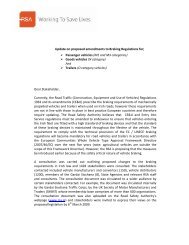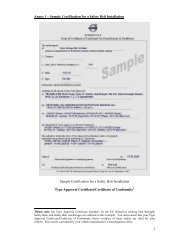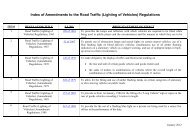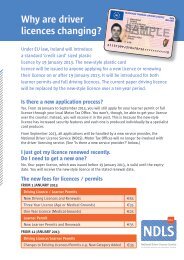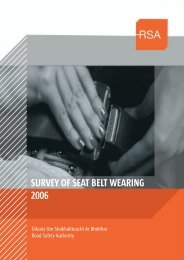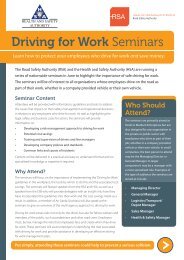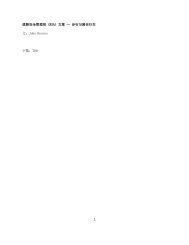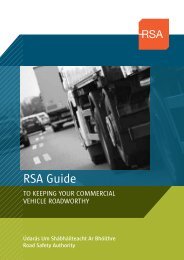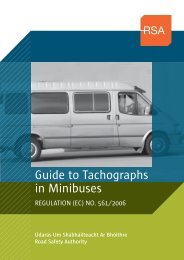NCT Manual. - National Car Testing Service
NCT Manual. - National Car Testing Service
NCT Manual. - National Car Testing Service
You also want an ePaper? Increase the reach of your titles
YUMPU automatically turns print PDFs into web optimized ePapers that Google loves.
NATIONAL CAR TEST (<strong>NCT</strong>) MANUAL 2012<br />
50<br />
FUEL SYSTEM<br />
Method of <strong>Testing</strong><br />
1. Examine the fuel tanks to see that they are suitable, free from advanced rust and are firmly held and secure on their<br />
mountings. In the case of Liquid Petroleum Gas/Compressed Natural Gas, check that the fuel tank is not damaged.<br />
2. Examine fuel tank straps or supports and mounting brackets to see that they are secure and free from fracture and that none is<br />
missing.<br />
3. Examine the mounting bracket bolts to chassis/body to see that they are secure.<br />
4. Where the LPG/CNG fuel tank is fitted inside the vehicle, check that the tank safety valve and filler valve are either piped<br />
separately to the outside of the vehicle or contained in a gas tight sub-compartment which is vented to the outside of the<br />
vehicle.<br />
5. Check that any ducting used for venting sub-compartments or tank valves is not damaged or blocked.<br />
6. Check that no fuel tank is fitted to the roof of the vehicle.<br />
7. Where LPG/CNG is fitted, check that the manual hand valve on the tank can be closed off. Or where a solenoid is fitted in<br />
place of or as an extra protection for the manual valve, check that it can be heard to open and close when the ignition key is<br />
switched on and off with the LPG/CNG switch in the ‘on’ position.<br />
8. In CNG systems, a second manual valve will normally be found near the filler valve which is usually in the engine<br />
compartment. This should also be checked.<br />
9. Check that a fuel tank cap is present and of the correct type. Check that the fuel cap seal is present and is not damaged.<br />
10. Check that there are no leaks at all from the system in the case of petrol. In the case of diesel, check that there are no leaks<br />
such that fuel is dripping on to the ground. In the case of LPG/CNG, check if a pressure leak (hissing noise) can be heard.<br />
11. Examine fuel pipes to see that they are securely clipped to prevent damage by vibration, chafing or cracking.<br />
12. Check that pipelines/hoses are not damaged or deteriorated (e.g. kinked or flattened) and are not in a position to be fouled by<br />
moving parts or the road surface.<br />
13. Check that all components of the fuel system are securely mounted.<br />
14. While seated in the driving position, check that the throttle control is:<br />
(a) functionally complete.<br />
(b) not cracked, fractured or excessively worn or corroded.<br />
(c) not obstructed or impeded in its travel.<br />
15. Check that the excess fuel device on diesel-engine vehicles cannot be readily operated from within the cab if it is of a type<br />
which, with the engine running, will cause an increase in smoke.<br />
16. Check that the engine stop control is working satisfactorily on diesel engine vehicles. Where LPG/CNG is fitted, check that the<br />
engine fuel supply solenoids (usually in engine compartment for each fuel used) can be heard to open and close when each<br />
fuel system is selected on the dash switch.<br />
17. Check that the air filter is present and securely fitted.<br />
NOTES<br />
1. The extent of this inspection is limited to those parts which can be seen and which are readily accessible<br />
without dismantling.<br />
2. All fuel tanks on the vehicle are included in the inspection.<br />
79



